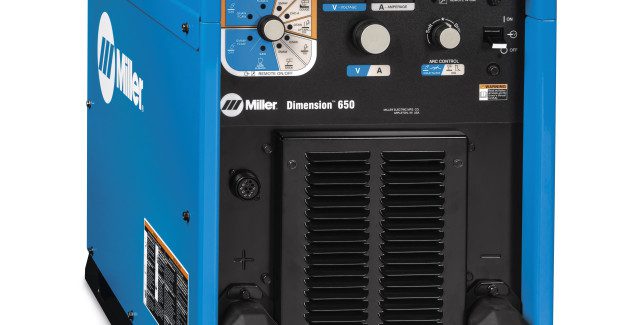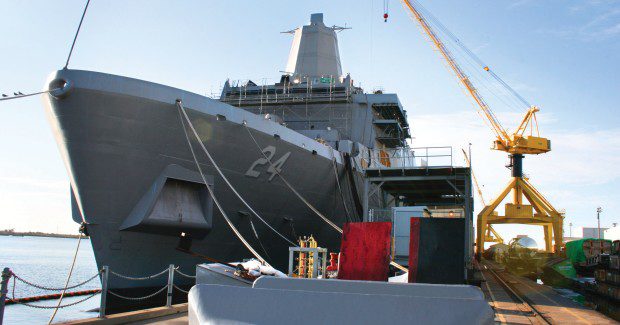How Multiprocess Welders Address Heavy Fabrication Challenges
The combination of new engineering with improved and reliable current technology for single source TIG, MIG and/or Stick welding and carbon arc gouging can really increase the operating profitability of jobsites and fabrication shops.
Posted: May 8, 2015
In the welding industry, companies are always looking for ways to create a more efficient operation and maintain — or better yet, increase — profitability. There are many challenges that can can play a role in reaching those goals, including deadlines, quality and code requirements, power or space limitations, and equipment durability. Some operations need a versatile power source that can address the demands of different applications.
Gaining the best results is all about having the right equipment for the job, so it’s important to assess the application and then choose accordingly. Sometimes a single-process power source is enough to meet the job’s requirements. However, for fabricators that face applications with varying needs, a multiprocess power source can offer significant benefits in terms of quality, productivity and cost by providing the capacity to TIG, MIG and/or Stick weld, as well as carbon arc gouge.
The demand for these power sources is highest in construction, shipbuilding and heavy fabrication, and recent advancements in engineering are helping to improve performance and durability and maximize the space savings of this equipment. In the past, the older designs associated with multiprocess power sources may have meant compromising the quality of one welding process in order to maximize a different welding process. That is no longer the case with newer power sources. Improved and reliable current technology ensures that employing Stick welding capabilities does not mean giving up something in GMAW (wire) welding capabilities, or vice versa, for example.
Having a single power source that is capable of multiple welding processes and carbon arc gouging provides the ability to complete a variety of jobs without the purchase of additional equipment, which can result in cost savings. Multiprocess capabilities can further help companies be more competitive by completing jobs faster because there is less downtime for changing over power sources to address a new application.
Newer multiprocess power sources also have a much smaller footprint than older units because the sizes of the internal components have been reduced so much that some power sources are as much as 40 percent smaller than previous models and significantly lighter. Having compact equipment is important on many jobsites and in many fabrication shops, especially those where space is limited or the applications may require portability of the machines.
Even with their reduced size and weight, these newer power sources still provide plenty of power when applications require it. For example, some offer up to 800 amps of usable power for heavy carbon arc gouging and as much as 650 amps of welding power at 100 percent duty cycle. While offering enough power to weld and gouge thick metals, many new multiprocess power sources still provide a precise enough arc to weld thin materials, so operators have the ability to meet multiple welding needs for many different types of jobs — from small to large.
WITHSTANDING HARSH ENVIRONMENTS
Beyond consistent and reliable arc performance, newer multiprocess power sources are designed to face the harsh environments of some jobsites, withstanding not only inclement weather and extreme hot and cold temperatures, but also the power limitations that companies sometimes face. On many jobsites environmental factors such as heat, cold, rain, dirt and mud require a rugged power sources that is also corrosion resistant, to improve durability. Internal airflow technology in newer power sources further protects electrical components from dirt, dust and debris, helping greatly improve reliability.
In many cases there might also be issues of power limitations, since on many outdoor sites (like those in construction or shipyards) power is a precious commodity. It’s important to have a welding power source that ensures the majority of energy consumed is being used to heat the arc. That helps save energy and costs, and also maximizes the limited power that may be available on the site. Newer multiprocess power sources help address these issues by being engineered to be very power-efficient, ensuring there is not wasted energy in the welding process or that the power source is drawing more current than necessary. The bottom line is the ability to get more welding done using less power.
https://youtu.be/nWMzzvaPrkk
Problems with “dirty power” are also addressed. Dirty input power refers to the spikes in power that can be generated when multiple loads are on the same line, such as when motors, compressors, heaters and chillers turn on and off. When this happens, power may spike very high or drop very low. But newer multiprocess power sources are engineered similar to a shock absorber to let these spikes pass without harming the electronics of the machine. With power sources that do not use this technology, power spikes can sometimes exceed the voltage limits of the components inside, negatively impacting performance and reliability.
In addition to utilizing the available power on a jobsite and addressing dirty power, a more power-efficient power source can also lower energy consumption to reduce energy costs during operation. A power source that uses less power also keeps the equipment cooler inside to help prevent problems with overheating or shutdowns. The fan that cools the equipment internally is regulated to operate only when required, which reduces noise, power consumption and the amount of airborne contaminants pulled through the power source, creating cleaner and better performance.
VERSATILITY FOR VARIETY
While some operations can meet their needs with a power source that offers a single welding process, there are other applications where multiple welding processes are necessary to complete a variety of jobs. In these situations, newer multiprocess power sources provide the additional versatility that is needed by being more durable and energy-efficient, with reduced footprints that save space. These advancements help address the common challenges faced on many jobsites and in many fabrication shops.
As with any welding job, having the right equipment can help improve quality, productivity and cost savings. Multiprocess power sources can address the needs of multiple welding environments, making them an ideal option for many applications.







